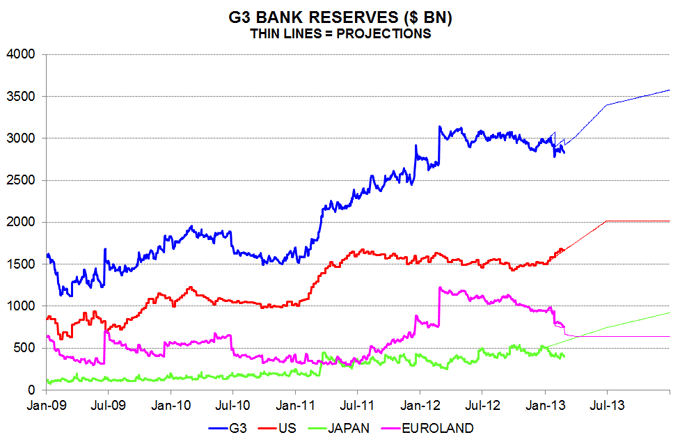A post three weeks ago suggested that a decline in G3 central bank liquidity would constrain near-term market prospects. Bank reserves at the Fed, ECB and BoJ combined had fallen to an 11-month low as a repayment of borrowing from the ECB by Eurozone banks offset US and Japanese QE operations. With banks able to repay the second ECB three-year LTRO from end-February, G3 reserves were projected to remain below their February 2012 peak until May.
The chart is an update from the previous post, showing actual reserves and projections based on announced US and Japanese QE plans and an allowance for the impact of the second LTRO repayment. As expected, the G3 total has tracked sideways since early February. The Eurozone and aggregate projections, however, have been revised up to reflect last week’s news that banks will make a smaller-than-expected initial repayment of €61 billion of the second three-year LTRO – much lower than the €137 billion initial pay-back of the first such loan.
After a fall this week as this repayment settles, G3 reserves are forecast to resume an upward trend, exceeding their previous peak in late April – slightly earlier than previously projected.
As the chart shows, US reserves are tracking the expected path but Japanese reserves continue to undershoot. The earlier post speculated that the BoJ was temporarily sterilising the liquidity impact of QE in order to slow the decline in the yen. With this objective achieved, Japanese reserves may reconnect with the projection. The forecast path, moreover, is likely to steepen as a dovish new BoJ leadership pushes through additional easing.